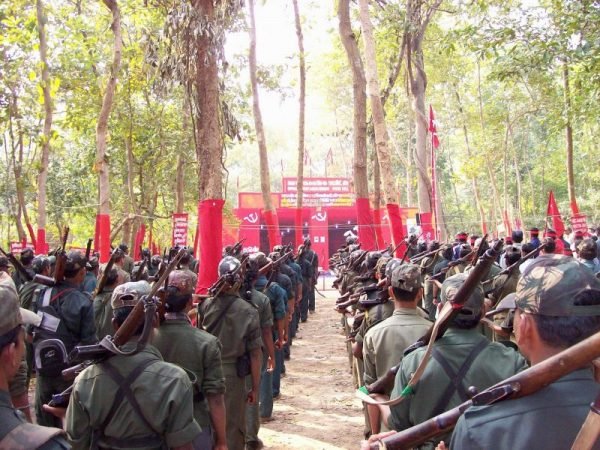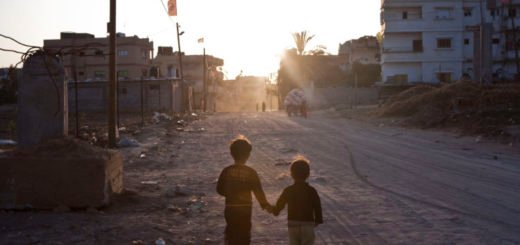New dimensions of Naxal movement in India

In an important development the Maoist Communist Centre of India (MCCI) and the Communist Party of India (Marxist – Leninist) People’s War, also known as People’s War Group or PWG merged to form a new entity, the Communist Party of India – Maoist (CPI – Maoist) on September 21, 2004. Officially, the merger was announced on October 14, 2004, by the PWG on the eve of peace talks between the PWG and the State Government. It has given new teeth to the Maoists’ movement in India and compelled the Central and State government to address the issue more urgently. It has also cast a dark shadow in all States already facing the Left extremism for decades. From there onwards both these groups of Naxalism agreed to work in unison–a pathbreaking step indeed. Now, as it became stronger the CPI (Maoist) altered its stance regarding revolution in India and were now ready to bring in mass – agitation, supplementing the already existing armed struggle. As a result, the total number of people killed by the Naxalite violence rose by 30 per cent between 2003 and 2005 while the number of policemen killed jumped to 53 per cent between 2004 and 2005. Naxalite strength has grown over 50 per cent since 2001. Till 2001, 60 per cent of the weaponry was a country made. Today they have AK series, grenade launchers, mortars, carbine etc.

Objectives of the new group
The ‘objective of the new movement’ was ‘seizure of power’ through an agrarian revolution. The strategy was the elimination of the feudal order in the countryside to free the poor from clutches of the oppressive landlords and replace the old order with an alternative one that would implement land reforms. The annual report of the Ministry of Home Affairs 2005-06 has also admitted that Naxalism is not merely a law and order problem but has deep socio-economic dimensions. The Naxals, in India, has accordingly modelled themselves on the Indian Army lines from training manuals to undercover training. The fighting forces of Naxals are divided into three categories. The primary force is of extremely well-trained personnel who spearhead any attack with superior weapons. The secondary force forms the bulk of a large group with less sophisticated weapons. Finally, the people’s militia comprises farmers, labourers and others.
Increase in Naxal violence
Gradually, Maoist violence gained momentum since the early 1990s and in succeeding years the Maoist–extremists launched such major attacks as killing Madhya Pradesh Transport Minister Likhiram Kavre in 1999, blasting the house of Telugu, Desam Party leader G. Sudhakar Reddy in Andhra Pradesh in 2000, and attacking TDP leader N. Chandrababu Naidu in 2001. Apart from this Naxal violence has claimed the lives of over 10,000 civilian and security personnel in the last five years with a significant rise in the number of killings in Left-wing extremism hit States. Out of a total of 10,268 casualties’ between2005 and 2010, 2372 deaths have been reported in 2009 as against 1,769 in 2008 and 1,737 in 2007 according to an RTI reply by the Home Ministry. A total of 1,999 civilians and security men had lost their lives in 2006 and 1,952 others in 2005. As of 2009, Naxalites were active across approximately 220 districts in twenty states of India accounting for about 40 per cent of India’s geographical area. Naxal–related violence occurs in those areas where the administration has low reach. The people in those areas are living at the mercy of insurgents. The effects of the Maoist insurgency have already taken its toll on business. Rebels sided with farmers during violent protests by farmers, which forced the scrapping of the Tata Motor’s Nano car plant and a chemical hub complex in West Bengal. In Orissa, bauxite production at the state-run National Aluminum Co. Ltd. has fallen the following attack by Maoists in one of their mines in April 2009. In a major deadliest attack the Maoist rebels killed 74 members of CRPF and destroyed an Armoured Personnel Carrier (APC) on 6th April 2010.

State responses, then and now
The first State response to Naxals in India was made by the United Front Government of West Bengal in 1967 to handle the first phase of the Naxalite movement, which the People’s Daily characterised as ‘spring thunder’. Hare Krishna Konar, the then Revenue Minister of UF government was of the view that so long there was dissatisfaction among the peasantry, militants could operate freely. He proposed the policy to wean away from the angry peasantry from militancy by a massive programme of vesting of a ceiling–surplus land of the big Zamindars and landowners. This programme resulted in good results and when the peasantry found that the large areas of land would be distributed amongst them, their loyalty shifted from the Naxalite militants to the normal political process. By its effects, the Naxalite movement disappeared in the state in the early 1970s.
The recent ferocity and the extent of attacks have reached such proportions as to invite the serious concern and involvement of the Central as well as the State governments. It compelled the Government of India to decide on 22 June 2009 to include ‘CPI (Maoist)’ in the Scheduled of an organisation banned under the Unlawful Activities (Prevention) Act, keeping in mind the growing unlawful activities by the group. The party is regarded by some as a left-wing extremist entity and a terrorist outfit and several of their members have been arrested by the Indian government under the Prevention of Terrorism Act (POTA). The group is officially banned by the State Governments of Orissa, Chhattisgarh and Andhra Pradesh, among others. In addition, funds are given to the States under the Police Modernisation Scheme to modernise their police forces in terms of modern weaponry, latest communication equipment, mobility and other infrastructure. The Naxal affected States have also been asked to identify vulnerable police stations and outposts in the Naxal areas and take up their fortification under the Scheme. Several new developmental schemes have been launched during the 11th Plan period in the Naxal – affected states.

The Government of India has realised the fact that unlike other extremist movements, Naxal activities find it easy to garner mass support as they ideologically seek to render justice to socially backward classes. Blatant use of force and banning the outfit in past has evidently proved to be ineffective in tackling the spread of Naxal menace. If Naxals are to be dissociated from the rural support base, the Government must come up with plans to bolster socio-economic activity in Naxal–infested areas which, in turn, can act as a means to upgrade the standard of living of the poor population. The Indian administration can not escape its due share in the failure of tackling the Naxalite violence. On the other for the Maoists’ creating terror and undertaking violence is easy but to have a place in the heart and soul of the citizenry is difficult one to achieve. What Maoists are doing is just anarchism against democracy.



















